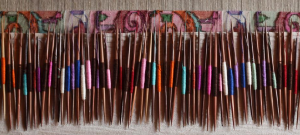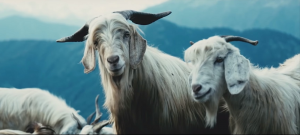Pashmina or Pashm is a Persian word that means “soft gold”. It accentuates and emphasizes the elements of softness, featherlight and eternal warmth, making it truly as precious and priceless like gold. It is a fine product attained from a breed of goats known as Chanthangi goat, that are reared within the Tibetan area of 4000 meters in winter. The wool from this goat is specifically obtained from the undercoat of these goats. It is six times finer than any animal hair, so fine the wool has to be hand-spun by a skilled crafter, not by machines, which makes it rare and costly.
History
The Pashmina shawls existence has been from the Indus Valley civilization 3300 BC to Mohenjo Daro 2500 BC. What unfolded was when a famous priest of that era’s trefoil patterns was unveiled. Pashminas were worn by the royals and elites for centuries. Many popular aristocrats who were in love with this fabric, naming few were Akbar, Jehangir and Josephine (wife of Napoleon). It became so popular when Napoleon discovered Pashmina, he gifted it to his wife Josephine. She was so pleased with the fabric that she asked her husband to buy some more so she could gift it to her friends. She was known to have collected more than 400 wraps over the span of 3 years. That is when it became a style statement among the Europeans. Centuries later it came into limelight when Princess Dianna started wearing them. And now, the Hollywood celebrities are spotted wearing this beautiful yarn.
The 15th century ruler of Kashmir, Zayn- Ul- Abidin who is the founder of the Pashmina industry introduced weavers from central Asia where it was already in use as luxury textile. Over the years a large variety of shawls were introduced depending on the art, culture and availability of handicrafts. A large part of this was dominated by the place this craft was being practiced at.
Undoubtedly its durability can be affirmed from the royal families that handed them down for generations. However in today’s date, one does not need to be regal to own a pashmina shawl, or even visit the high altitudes of Indian Kashmir, Pakistan and Nepal. At today’s date they are available at meritorious stores. The members of fashion fraternity around world use and own products made of pashmina ranging from scarves, wraps, coats, pashmina shawls and stoles. It is a mark of the social and financial status.
Process of Making Pashmina Thread
Fiber Harvesting
Animals shed their undercoat during spring molting season that is when Pashmina is collected. Thee goats start molting anytime from February to late May depending upon the weather conditions and region.
In India, the major method of harvesting pashmina is combing . It is done with the use of a special type of comb. Pashmina is manually dusted to remove impurities like sand, dust, etc that may be stuck to it. The fleece is then sorted as per the color. The natural colors of the fiber being white, grey which is mixed with darker shades like browns. The quality of the fiber mainly depends on its fineness, length, color and down fiber content. Finer, longer and white pashmina generates better price as compared to coarser, colored and shorter fiber.
The pashmina procurement is done from all Changthangi Pashmina growers Association in Leh Ladakh in India. The major chunk of which is sold and sent to Srinagar and Kullu Valley for utilization. Therefore in India raw pashmina fiber is 10-15 times more expensive than crossbred fine wool.
Dehairing
Pashmina is collected during the spring season when the goats naturally shed their winter coat. In dehairing, goats are combed to get the fine woolen undercoat hair. Goats generally produce double fleece which is mix of fine hair and guard hair. Fine hair are separated by either by combing out the down or by using special equipments. The guard hair is removed completely before processing. The presence of more than 5% guard hair affects the appearance, handle and quality of the final products.
Spinning
The wool is collected and undergoes the hand spinning process. The fiber is spun on a spinning wheel also known as Charkha locally known as yander. Before undergoing the spinning, raw material is treated by stretching and cleaning in order to remove all the dirt. Then it is soaked for a few days in a blend of rice and water so as to enhance its softness. Hand-spinning is a time consuming and painstaking process which requires a lot of dedication and patience.
Weaving
Pashmina wool is a highly delicate material. The vibrations caused by the power looms can be damaging to its fiber. Therefore, weaving of the customary 100% Pashmina Shawls is done on hand looms. Weaving, which in itself is an art form, is done using a shuttle. This art has been passed over from generation to generation. A single shawl takes about four to five days to weave on a handloom.
Dyeing
Like spinning, dyeing is also performed by hand. Azo-free and metal free dyes are used during the process to make these eco-friendly shawls. Pure water is pumped up from deep under the surface and dyeing is done at a temperature just below the boiling point of water for around an hour.



